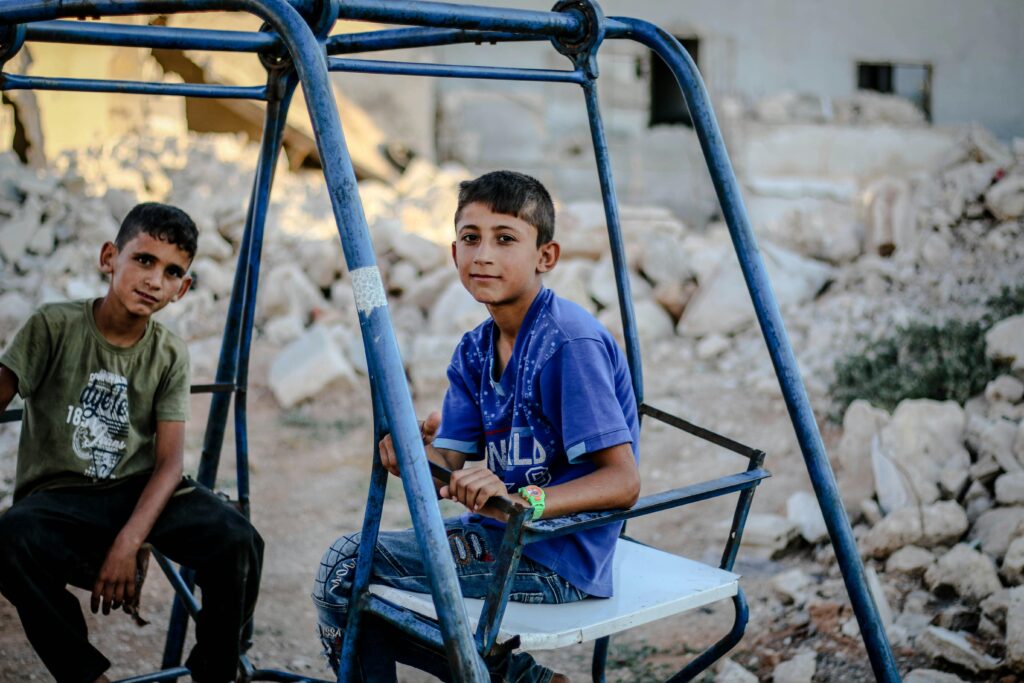COCAP and Critical Issues in the Development of Children and Adolescents in Conflict Zones: A Psychoanalytic Perspective
Introduction
The Children of Conflict and Post-Conflict Areas Program (COCAP) addresses the complex and often devastating impact of war, migration, and social upheaval on the psychological development of children and adolescents. Internationally, the experiences of children growing up in conflict-affected areas reveal deep challenges not only for their immediate survival but also for their long-term psychosocial and emotional development, influencing their transition into adulthood.
Understanding these issues through a psychoanalytic lens illuminates how early traumatic experiences shape identity formation, relational capacity, and resilience. The evolving international frameworks around child protection—incorporating legal, social, and psychological dimensions—highlight the urgent need to integrate psychoanalytic insights into global policies and interventions.
Critical Issues in Child and Adolescent Development in Conflict Contexts
1. Disrupted Attachment and the Maternal Function
Across conflict zones worldwide, attachment bonds between children and caregivers are frequently disrupted by separation, loss, or violence. Winnicott’s concept of the maternal function as an emotional “holding environment” becomes precarious or absent, impairing the child’s ability to regulate affect and internalize security (Winnicott, 1965). Adolescents, navigating individuation and identity formation, often find this breakdown manifesting as dissociation, aggression, or withdrawal.
International efforts through COCAP emphasize the importance of restoring caregiving relationships and providing surrogate containment structures, such as psychosocial support centers and community-based interventions.
2. Trauma and the Symbolic: From Experience to Narrative
Wilfred Bion’s container/contained model (1962) explains how trauma can overwhelm psychic capacities, leaving children unable to process or symbolize their experiences. COCAP programs recognize the need for spaces where children can articulate their narratives safely, transforming trauma from raw experience into manageable memory.
The transition from childhood to adolescence marks a crucial phase for this symbolic work, as identity becomes more complex and social pressures mount. However, many adolescents in conflict zones suffer from silenced trauma, with little opportunity to develop a coherent self-narrative.
International Developments Affecting Children and Adolescents
1. The United Nations Convention on the Rights of the Child (UNCRC)
The UNCRC has been a landmark international treaty advancing the recognition of children as rights holders, including the rights to protection, education, health, and participation. However, psychoanalytic insights reveal that rights must be coupled with psychic containment and relational attunement to be effective. A mere legal framework does not heal the fractured inner world of children exposed to war or displacement.
2. The Impact of Migration and Displacement
Global migration flows, driven by conflict, climate change, and economic crisis, place millions of children and adolescents in precarious situations. COCAP highlights the multiple layers of vulnerability: the loss of homeland, exposure to violence, disruption of education, and cultural dislocation.
In these contexts, psychoanalysis points to the importance of addressing identity fragmentation and cultural trauma, often carried intergenerationally, which may complicate acculturation and psychological adjustment.
3. Gendered Dimensions of Conflict
International developments increasingly recognize that girls and boys experience conflict differently. Girls face heightened risks of sexual violence and exploitation, while boys are often targeted for conscription as child soldiers. COCAP’s gender-sensitive approaches are essential in tailoring psychosocial interventions that consider these differentiated experiences.
From a psychoanalytic perspective, the intersection of gender, trauma, and identity requires nuanced understanding of how gendered social expectations shape the internal world and coping mechanisms of adolescents.
From Childhood to Adulthood: Long-Term Implications
The critical developmental stages of childhood and adolescence form the foundation for adult identity and social participation. The unprocessed trauma and disrupted caregiving experienced in conflict zones often persist into adulthood, manifesting as difficulties in relationships, mental health disorders, and cycles of violence.
COCAP’s integrated programs aim to support continuity of care, promoting resilience and reparative experiences across the lifespan. Psychoanalysis supports this approach by emphasizing the importance of narrative integration and symbolic reparation as adults attempt to make meaning of their early experiences.
Conclusion: Bridging Psychoanalysis and International Policy
The international developments surrounding the rights and protection of children and adolescents in conflict zones—exemplified by COCAP’s work—demonstrate growing awareness of the complexity of trauma and development. Yet, the psychoanalytic perspective remains critical for understanding the depth of psychic wounds and the need for relational containment.
To foster true healing and social reintegration, programs must address not only physical safety and legal rights but also the symbolic and emotional needs of young people. As these children and adolescents become adults, the international community bears responsibility for providing frameworks that honor their full humanity.
References
Winnicott, D.W. (1965). The Maturational Processes and the Facilitating Environment.
Bion, W.R. (1962). Learning from Experience.
United Nations (1989). Convention on the Rights of the Child.
Save the Children, UNICEF, UNHCR Reports on Child Protection and Psychosocial Support (2020–2024).
COCAP Program Documentation and Evaluations (various countries, 2015–2025).
